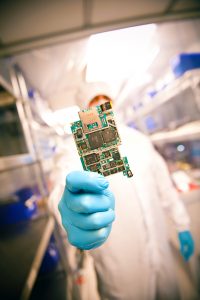In this article, we’ll break down what NIST 800-88 actually requires, why storage media of all types can defy expectations, and how verification services close the gap between intention and assurance.
SSD: What Happens When Files are Accidentally Deleted


Scenario: Data Deletion
Data deletion occurs when a user deletes data and then empties the recycle/trash bin.
TRIM Command
In order to maintain optimal performance, all modern solid-state drives utilize the TRIM command. When enabled, this command executes automatically to delete and reset data that has been “Trashed” or “Recycled” and prepare for new data to be stored.
The downside of trim? On an HDD, data continues to live even after deletion and is always recoverable unless over-written. Unlike an HDD, data that has been deleted on an SSD and then detected by the TRIM command is truly gone.
Different operating systems approach TRIM in different ways. On some computers, TRIM will execute immediately when data deletion occurs. On others, TRIM executes at scheduled intervals.
What to do to Avoid Data Loss
The best thing to do to save data that has been accidentally deleted on an SSD, is to power down immediately. Since TRIM operates in the background, simply putting the computer into sleep mode will not stop the command. The more quickly you power down the computer, the more likely the deleted data might be spared.
DO NOT power up the computer. The TRIM command may resume as soon as the system is booted.
Send the computer or SSD to DriveSavers. Any attempts on your part to run software or recover data could cause additional data loss due to SSD maintenance routines that run in the background.
What Happens at DriveSavers?
In order to mitigate the opportunity for the TRIM command from running when we are attempting data recovery on an SSD, we separate the drive from the OS that has executed the command and use other proprietary techniques. Using a new environment in which there is no TRIM command, we extract a digital image from which to perform data recovery.
How to Avoid Data Loss from TRIM
Back up, back up, back up!
We always recommend that people back up their hard drives. With SSDs, however, this is especially crucial. The only way to recover data after TRIM has been executed is to restore from a backup.






